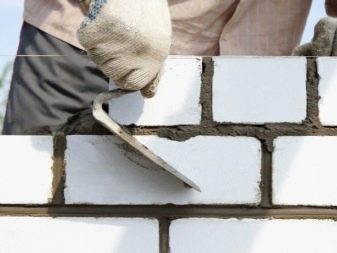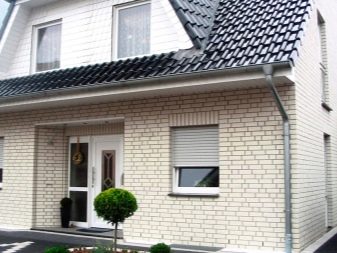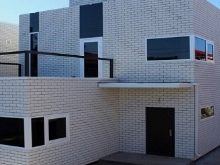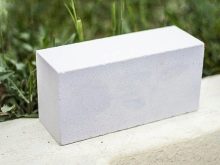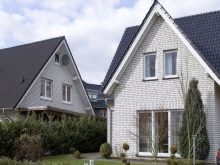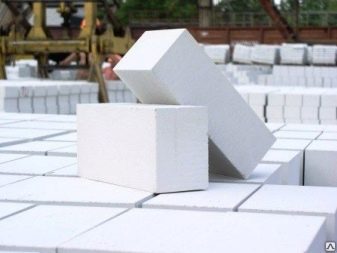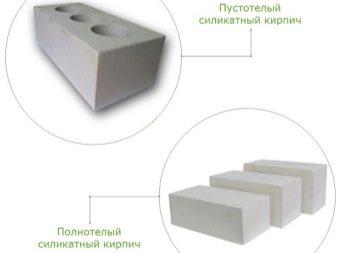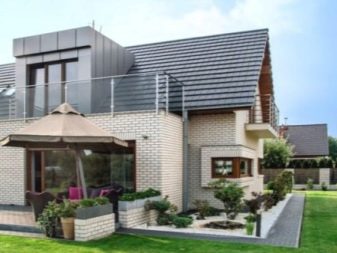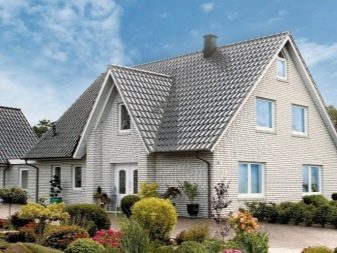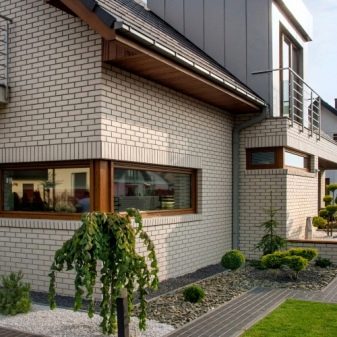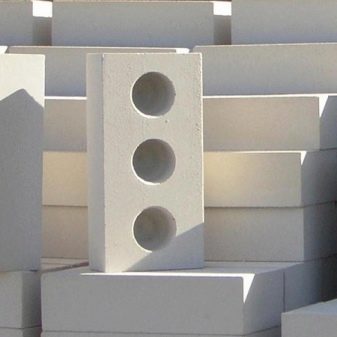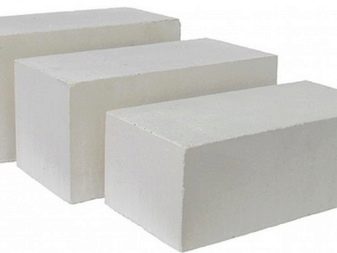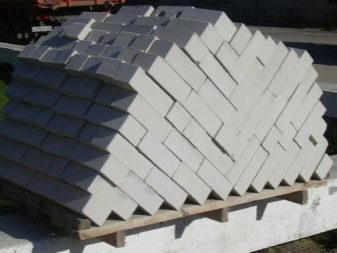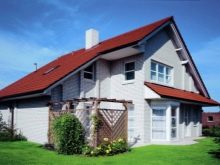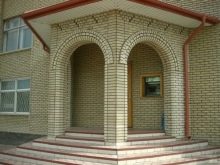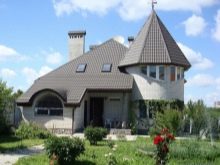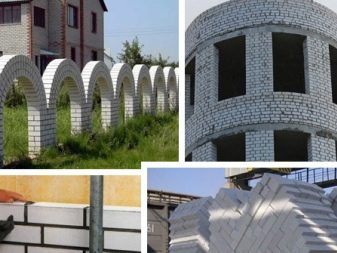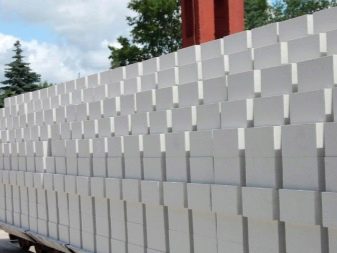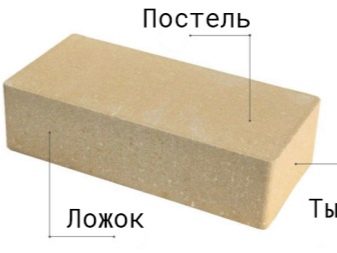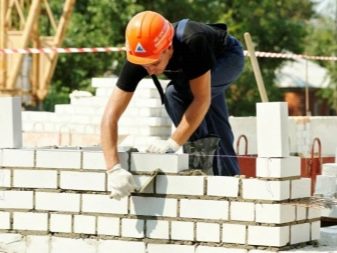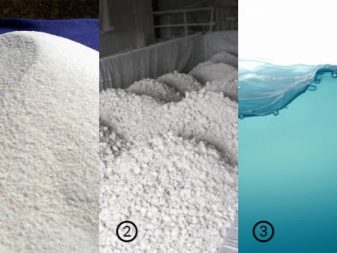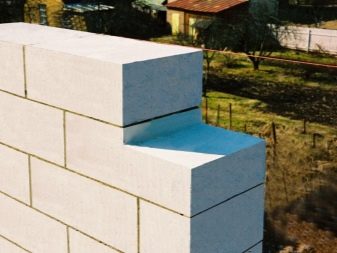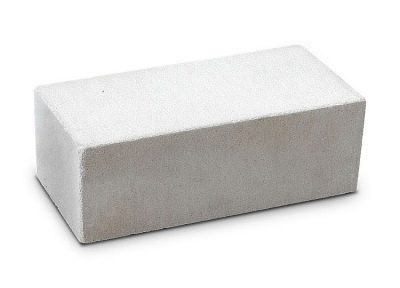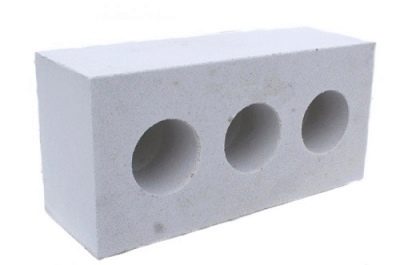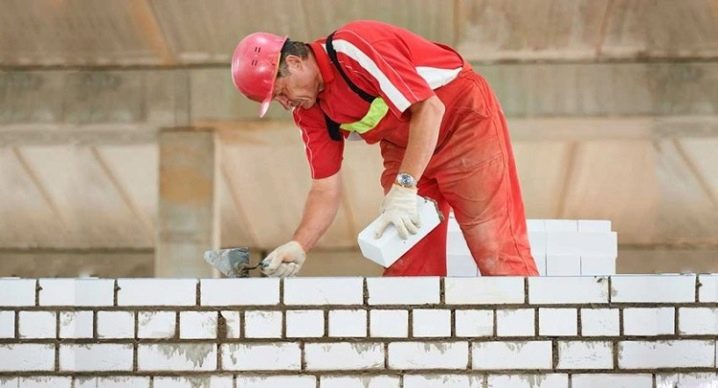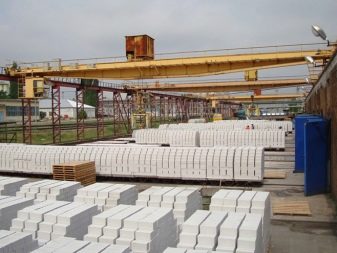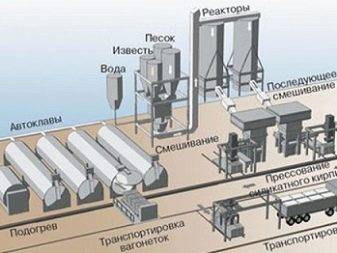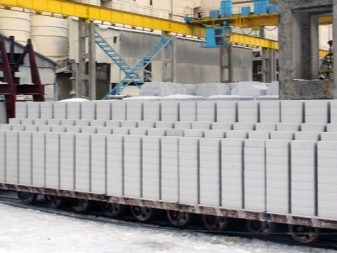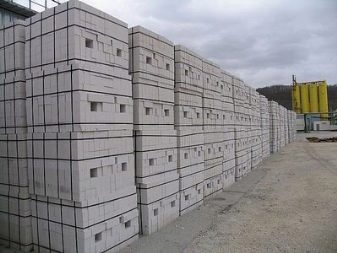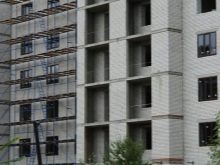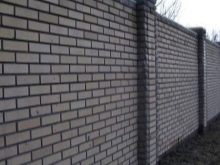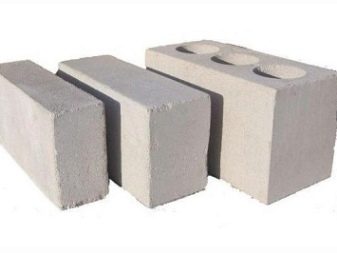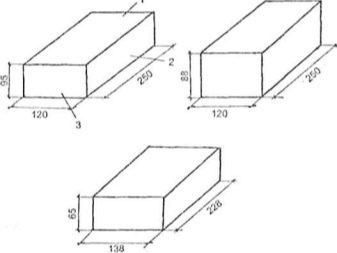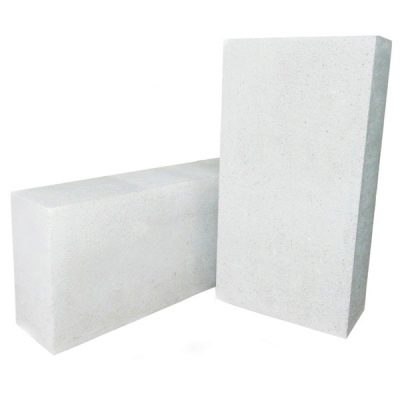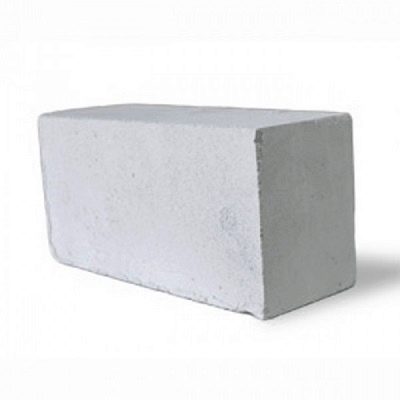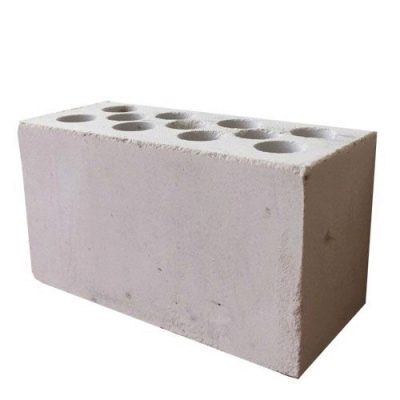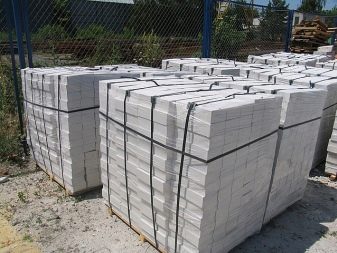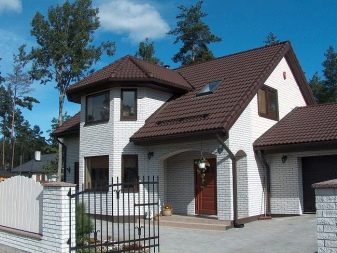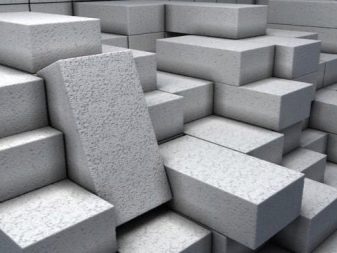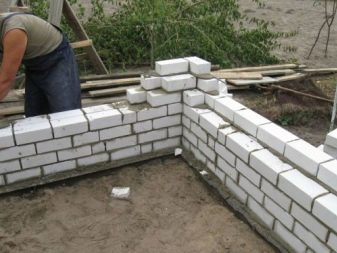Description and size of white silicate bricks
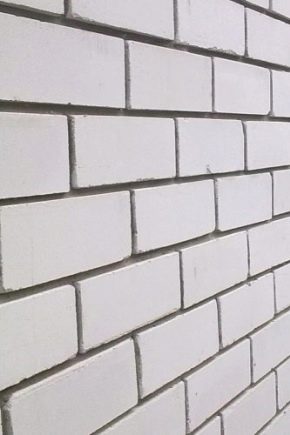
In a huge assortment of various building materials brick for many years remains the most sought-after and relevant. Not only residential buildings are built from it, but also public or industrial buildings, as well as various outbuildings. By silicate brick, you can safely contact if you plan to build a structure of high strength. This building material is chosen by many users. Today we will consider in detail what size and features such a brick has.
What it is?
Silicate brick is an artificially manufactured building material of the correct shape of a parallelepiped (non-standard specimens may have other shapes).It is produced from quartz sand and lime. It has excellent strength characteristics, and also guarantees an ideal geometric shape. It should be borne in mind that this factor is important not only for the aesthetics of the facade, but also for the quality of the joining of its individual components.
The smaller the seams between the bricks will remain, the less visible the bridges of cold will be.
Features, advantages and disadvantages
Currently, the range of building materials pleases with its diversity. It is possible to pick up ideal products for any construction works. We can talk about a small outhouse like a chicken coop, or a more serious construction, for example, a big cottage. In many cases, people choose silica brick as the main raw material.
This building material was used in the relevant works relatively recently. The technology was proposed only in 1880, but this period was enough to understand that buildings made of silicate brick can boast of increased strength, durability and reliability. This popular raw material today has many positive characteristics that make it popular among consumers.
Get to know them.
- First of all, you should pay attention to the strength of silica brick. Variants are available with the marking M-300, which are able to transfer pressure up to 30 MPa without any problems (this value is significant). It should be borne in mind that silicates are also adapted to severe bending loads (up to 4 MPa).
- Silicate brick is resistant to shrinkage. Buildings from it are not subject to the formation of cracks. In addition, they are not afraid of shifts of the fundamentals.
- By itself, white silicate brick is quite attractive and aesthetic. From such products are very neat buildings.
- The silicate brick is very convenient in construction. Practically any masonry mixes are suitable for this building material.
It can be both cement-limy, and polymeric glue solution. Search for special formulations do not have to.
- This building material is not demanding in the care. It is unpretentious and durable.
- Competently made white-brick structures are characterized by a long service life. It is usually about 50-100 years old.
- Silicate brick is such a materialwhich boasts good sound insulation characteristics. In buildings from this raw material, annoying street noises will not be heard, which attracts many people.
- Since a lime component is present in silicate brick, it does not need additional antiseptic processing. A mold or a fungus appears extremely rarely on the walls constructed from this product.
- The construction of silicate bricks are good because they do not exert serious pressure on the foundation base and are fairly light.
- Another significant advantage of silicate brick is a clear geometry. Due to this quality in the buildings of this building material there are almost no cold bridges, and it is much more convenient to stack such parts.
- On the walls of silicate brick there is no efflorescence.
- The silicate brick is environmentally friendly. It is not capable of harming human health, either during construction or after their completion. For the environment, this material is also absolutely safe.
- Many users prefer silicate brick, because it is not combustible.Yes, and he does not support burning. However, it should be borne in mind that silicate brick does not like high temperature indicators very much - the limit is 500 degrees Celsius. If the heat goes beyond the specified limits, the brick, of course, will remain intact and will not fall apart, but its level of strength will decrease significantly.
- This building material has an affordable price and is found in many outlets, so finding it is not difficult.
If you decide to turn to silicate brick, then you should know not only about its advantages, but also about its disadvantages.
- The main disadvantage of this building material is high water absorption. Because of this, such a brick is susceptible to destruction under conditions of low temperatures (frozen water simply burst the stone). That is why silicate bricks do not make the fundamentals, because they are unlikely to be of high quality and reliable.
- The silicate brick does not differ in high frost resistance qualities. It is desirable to use it only in the southern or middle regions. Such building materials are poorly suited for cold areas, which is a big minus for Russia.
- On silicate brick, as a rule, there are no decorative components, as well as beautiful smooth shapes. Sell such materials only as standard.
- This building material has a high thermal conductivity. Buildings from this brick must be insulated.
If you decide to abandon additional insulation, and instead build too thick walls, then you should know that in the end it will not be very profitable.
- Despite the fact that it is possible to build a light structure from a silicate brick, this material itself is heavier than its analogues, which creates certain difficulties in its transportation.
- On the modern market there are a lot of low-quality products, issued for reliable and durable. Buildings of low-quality bricks are short-lived and quickly begin to collapse.
- The color palette of such a brick is rather poor - there are only white and red materials. Exclusively alkali-resistant pigments are used in their production, and there are very few of them. True, with significant moisture absorption, the brick color starts to change - it turns gray.Because of this, the building becomes less aesthetic.
As you can see, the disadvantages of a silicate brick are much less than the advantages. Of course, a lot depends on the particular batch, the materials from which you purchased. That is why experts recommend buying such products in reliable establishments that have a good reputation in your city.
Main characteristics and composition
High-quality silicate bricks must have a number of operational characteristics, due to which they can be used in various construction works. There is a separate category of this building material. It includes products that have a non-standard shape (far from the parallelepiped) and the same dimensions. With the use of such elements create all sorts of interesting architectural structures.
For example, it can be spectacular and rich arches, neat rounded corners or vaults - there are a lot of options for using non-standard bricks. The dimensions of these parts are determined by the specifications and applications to state standards. The following characteristics of silicate brick are under the control of GOST points.
- Level of strength. Produce materials labeled M75-M300. For the preparation of interior walls, it is common to use any bricks with a suitable level of density. As for facing works, only a brick with a marking not lower than M125 or a stone (double brick) of a grade not lower than M100 will work here.
- Level of frost resistance. Create a silicate brick of the following brands - F25-F50. This means that building materials of various classes withstand from 25 to 50 cycles of freezing and thawing without loss of their useful qualities.
- Heat conduction. Here a certain amount of heat is meant, which such a brick can generate through itself per unit of time. Silicate brick is not the highest.
- Fire safety. This parameter depends on the direct composition of the brick. It should not contain flammable components.
- Radioactivity. This parameter in silicate brick does not exceed the level of 370 Bq / kg.
As for the composition of such products - it is the same for all subtypes of bricks. It usually includes the following components:
- quartz sand (80-90%);
- hydrated lime (10-15%);
- filtered sand.
But the structure of such raw materials may vary, which affects its characteristic qualities. Distinguish silicate bricks with the following types of structures.
- Full bodied It is a monolithic silicate product with no voids. In this case, the raw material itself may have a certain number of pores, which affects its density. Full-bodied versions of bricks are more dense and strong. In addition, they are distinguished by a rather long service life and the minimum degree of water absorption. However, one should take into account that full-bodied bricks are characterized by the highest coefficient of thermal conductivity, as well as the maximum weight.
- Hollow. In the structure of such materials there are voids (holes of different sizes). These models are lighter. They also have good sound insulation and thermal insulation qualities. But these bricks absorb more moisture into their structure, keeping it longer.
It is also necessary to take into account that different requirements are imposed on the ordinary and facing silicate brick - the highest of them relate to the second options.These parts must have ideally correct dimensions, uniform color and an appropriate level of strength. Such a brick should have two front surfaces (ideally smooth) - a spoon and a pinch. Some manufacturers produce products in which there is only one specified surface.
Facial type of brick can be both hollow and corpulent. It may differ in its color and be, for example, yellow or black. Its texture can also be very interesting - with an imitation of gold, aged stone and other similar objects.
Ordinary brick is used for the construction of internal wall foundations. There are minimum requirements for products. Rounded edges and bases may occur. The presence of chipping or peeling is also not prohibited. However, there should not be too many defects, and they should not affect the strength / reliability of materials. The brick of an ordinary subspecies can also be corpulent or hollow. It is not produced neither colored nor textured for quite clear reasons.
Production technology
Manufacturing technology of high quality and durable white brick It is considered quite simple and consists of several important stages.
- First, prepare and mix the necessary raw materials - 9 parts of quartz sand and 1 part of air lime. Usually for this purpose 2 main methods are used - silage or drum. The silage method is considered more efficient, but takes a lot more free time.
- After that, properly prepared raw materials are transferred to special molds. Here it is extremely important to remember the permissible level of humidity - it should be no more than 6%, so that the material turned out to be quite dense and durable. Working pressure at this stage should be 150-200 kg / sq. cm.
- Next, the harvested elements are moved to the autoclave. Also, these parts are specially treated with hot steam, the temperature of which should reach 170-190 degrees Celsius. As for pressure, it should be no more than 1.2 MPa. In order to optimize the loading and heating, the change in temperature values and pressure is very slow. The whole process usually takes about 7 hours. Achieving the regime and reducing the temperature takes about 4 hours.
Application
Considering all the advantages and disadvantages of silicate brick, which is popular today, it is used in the following areas.
- During the construction of load-bearing, self-supporting or interior walls in buildings having from 1 to 10 floors.
- When preparing all sorts of outbuildings. Exceptions are only those structures where there will be a high level of humidity. So, for the manufacture of baths, for example, silicate brick does not work at all.
- Different fences are built from the specified raw materials.
- Silicate brick is permissible to use in the manufacture of serious industrial objects.
- As for the underground erection - here silicate brick is used only in exceptional cases and only under the condition of high-quality waterproofing. Otherwise, the building will not serve for a long time in the specified conditions.
Before you go to the store for the purchase of this raw material, you need to consider that it is not used for the manufacture of wells or basement structures, as well as the foundations. That is why, before acquiring a silicate brick, it is required to clearly define for which particular purposes you need it.
Dimensions
Quality bricks must necessarily comply with the dimensional parameters specified in the State Standards. This is especially true of goods used in the manufacture of large construction projects. The parameters of such products in no case should not exceed the permissible limits - such elements are usually not allowed to work.
Current silicate bricks are produced with the following dimensional parameters (standards):
- ordinary single - similar species have a length of 250 mm, a width of 120 mm and a thickness of 65 mm. (the direct weight of these products depends on their structure - corpulent or hollow);
- one and a half (thickened) - have the same length and width parameters as above, but their thickness reaches 88 centimeters;
- double (silicate stones) - the parameter thickness of a brick of this type is 138 mm.
How to choose?
In order for any erection of silicate brick to be as strong and reliable as possible, for a long time it has not been subjected to destruction, even at the time of choosing the building materials themselves, one must be very careful. Experts advise to pay special attention to the following important points.
- If you lightly tap a silicate brick with a metal object, then the sound should be quite resonant. If you heard a dull echo, this may indicate poor-quality drying of the material.
- We must not forget that the storage conditions of such building materials will necessarily affect its quality and durability. If the bricks lie in the open, their positive qualities will be significantly reduced, so you should not buy such a product, even if it has a tempting price.
- Not the last role is played by the quality of packaging, as well as the delivery of bricks. Experts recommend buying products sold in special pallets of a safe height. This results from the fact that in such container bricks are much more difficult to damage or destroy.
- Pay attention to the integrity of the silicate bricks. They should not be major damage and large chips. If any have been noticed, it is better to abandon the purchase and look for better products. Otherwise, the construction of this raw material may not be the most reliable and high-quality, albeit cheap.
- When making a purchase, be sure to check if what you are planning to purchase is in line with what you are shipping.
Vigilance at this stage should not be put to sleep, otherwise it will lead to additional expenses.
- By itself, this material is inexpensive, so the record low cost is not worth pursuing. A product whose price is shockingly low may well be of poor quality. The construction of such materials will not last long, you have to redo the work, but with new bricks, and this is extra waste.
- If you are looking for suitable lining material, then you should choose only high-quality versions of the perfect performance - they should not be the slightest defect or damage. It is advisable to give preference to beautiful textured specimens. In addition, these products can have not only white color.
- Try to acquire such building materials in trusted outlets known in the city of your residence.
In the next video you are waiting for the pros and cons of silica brick.
